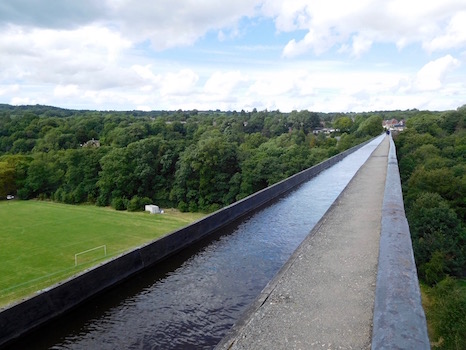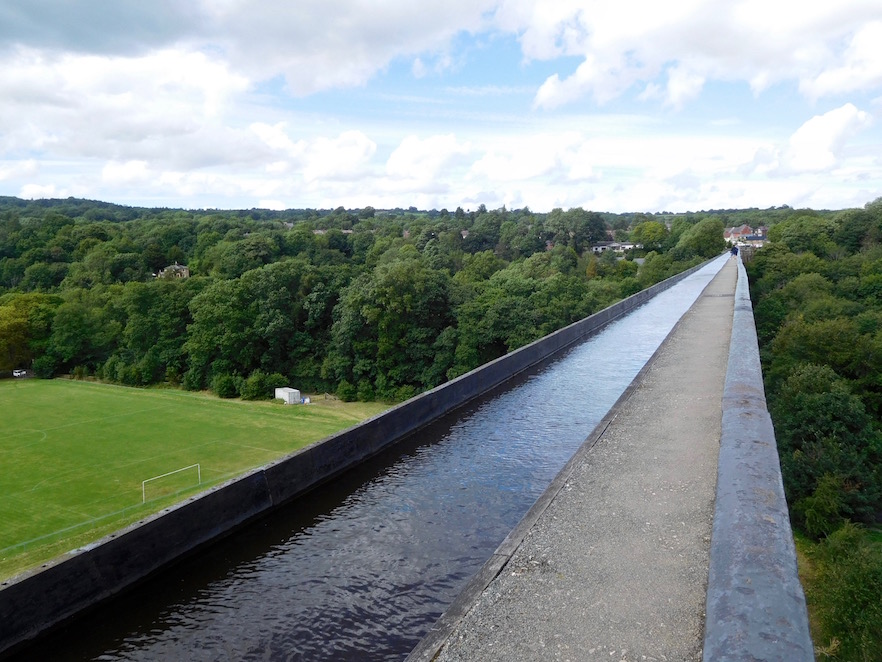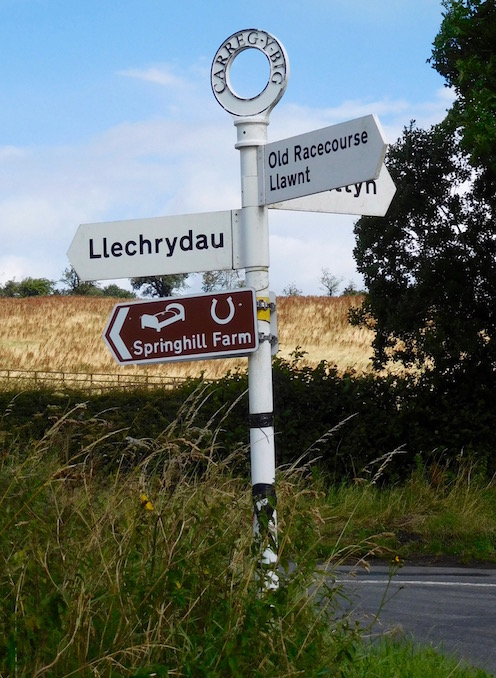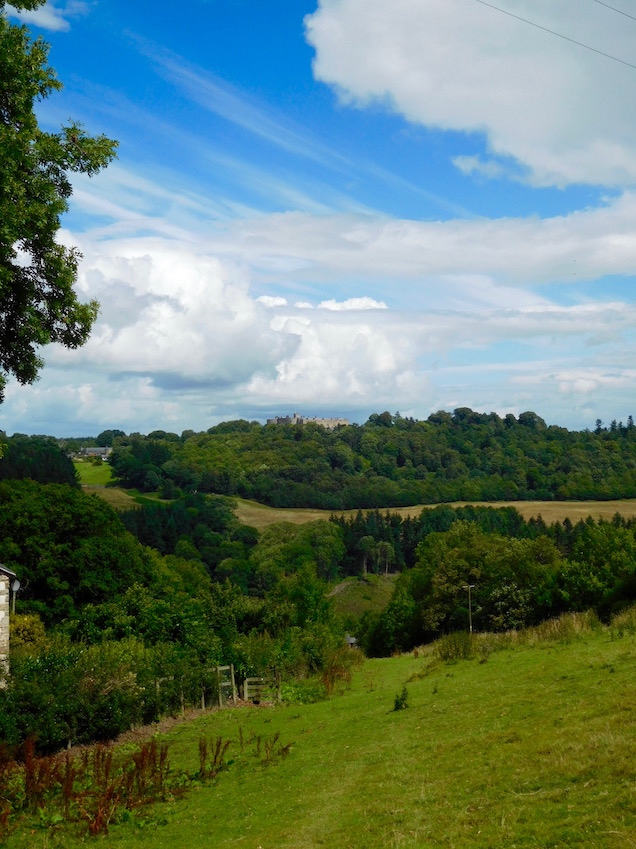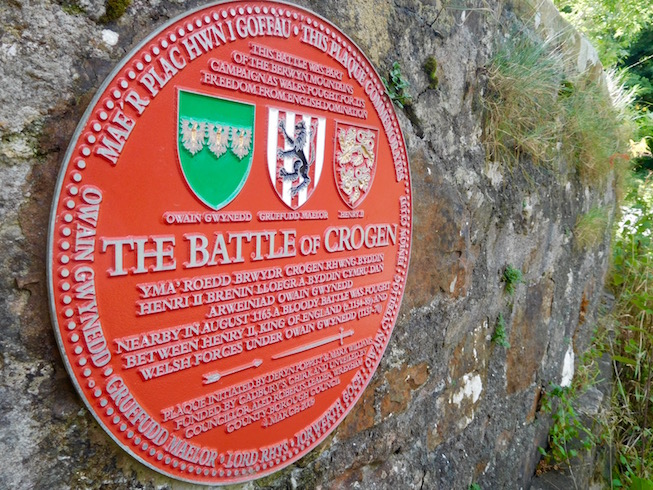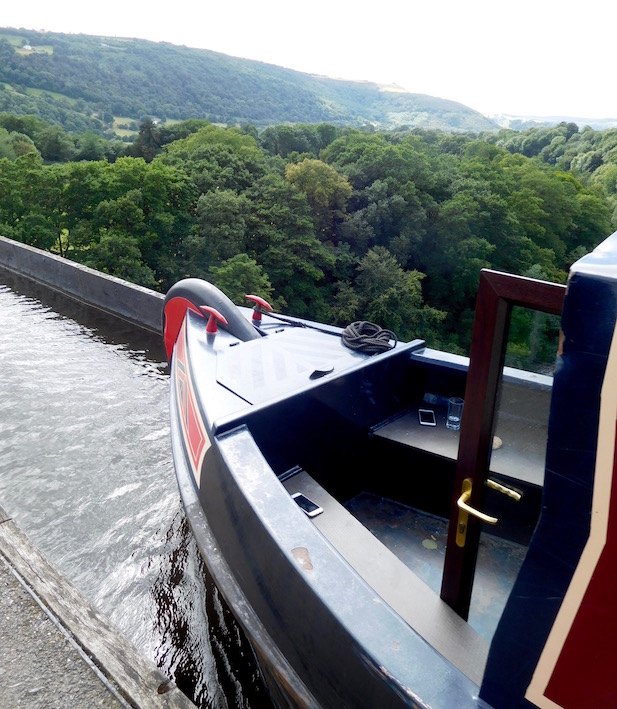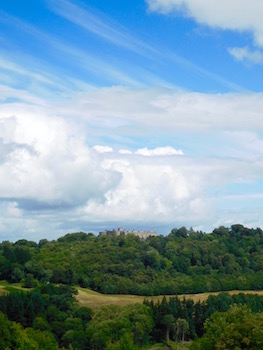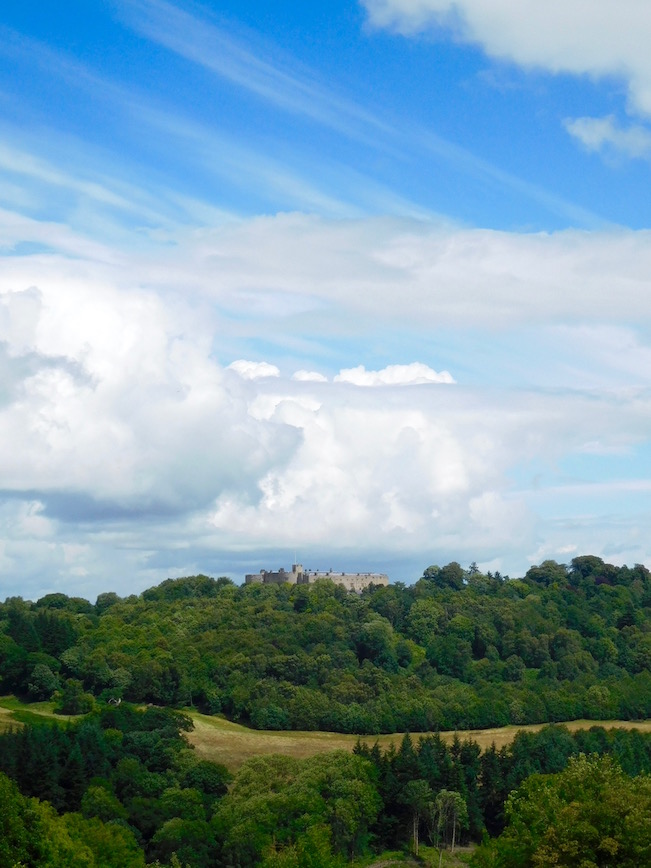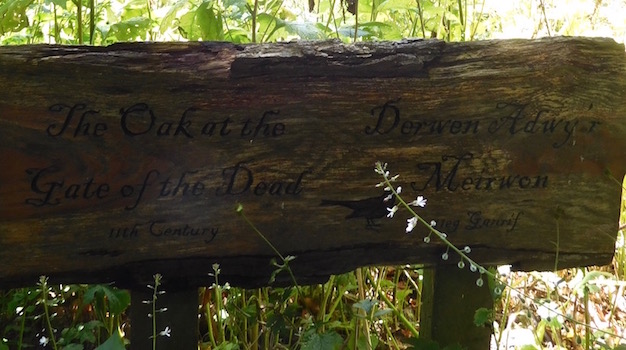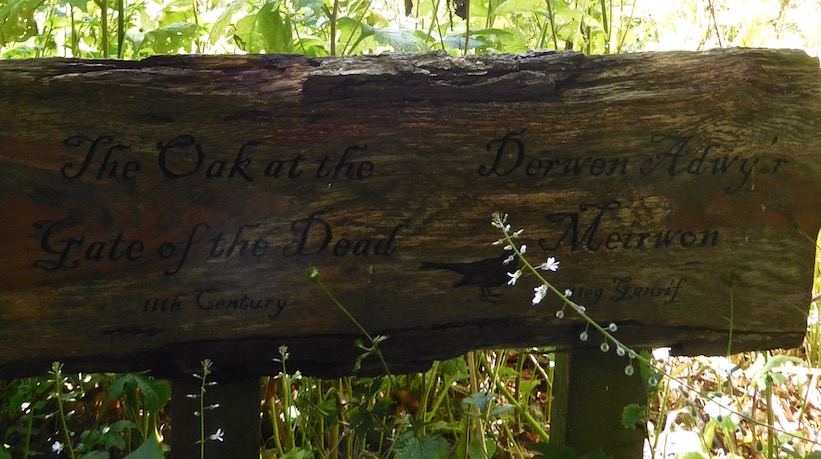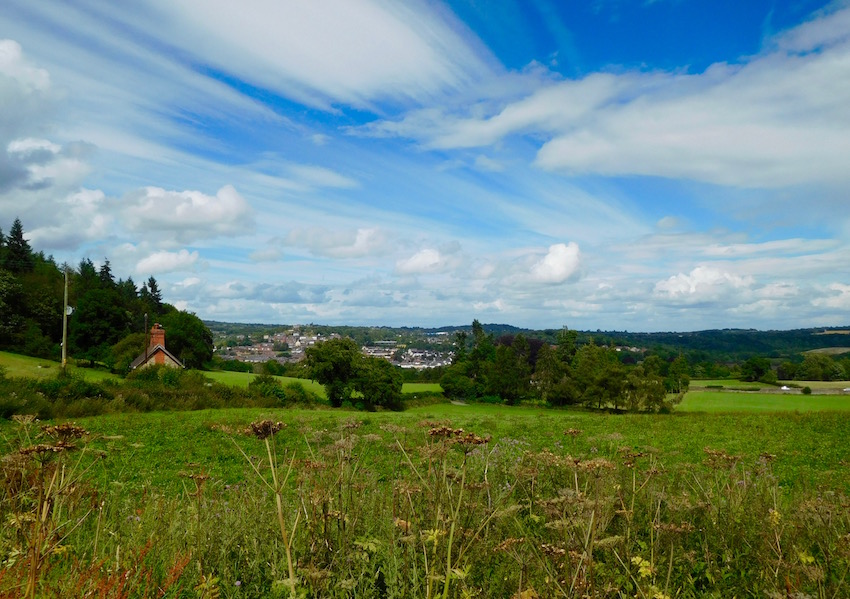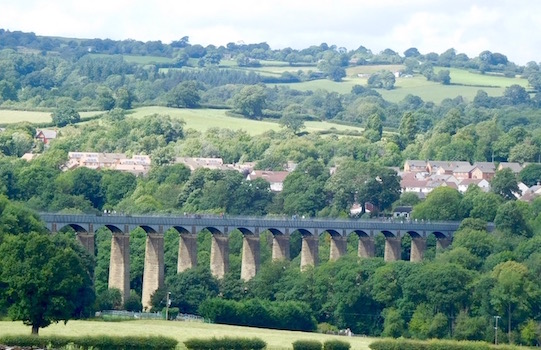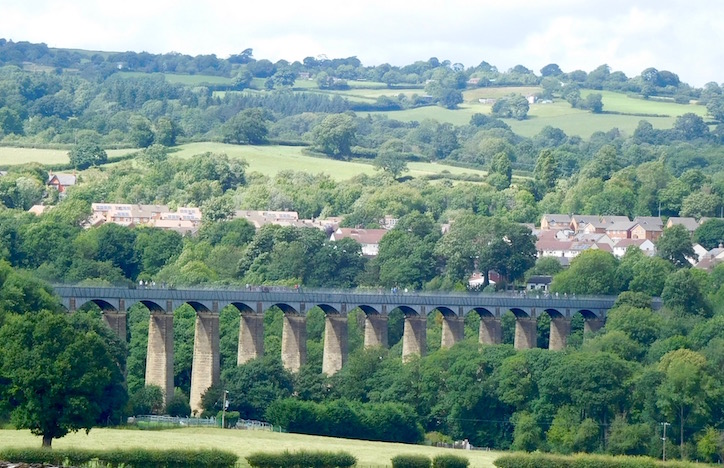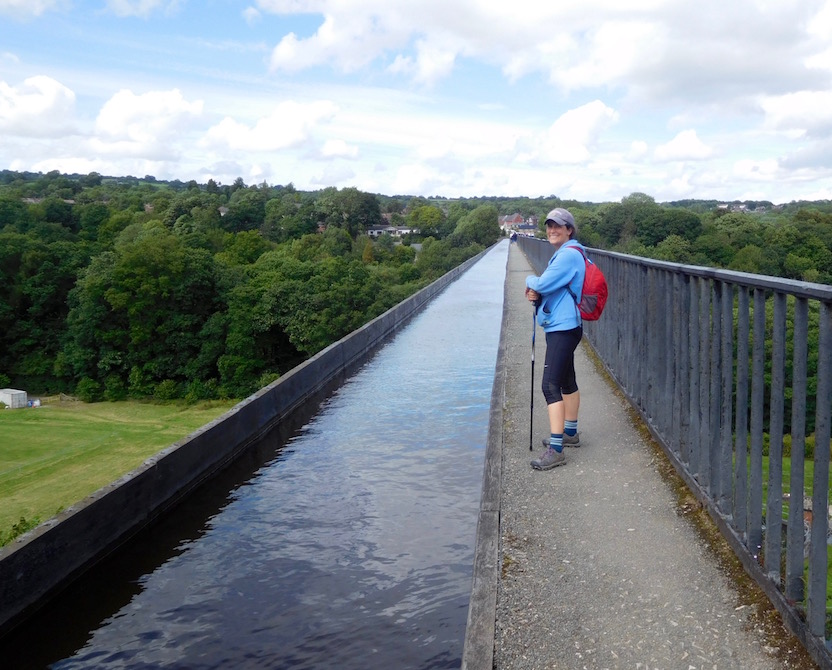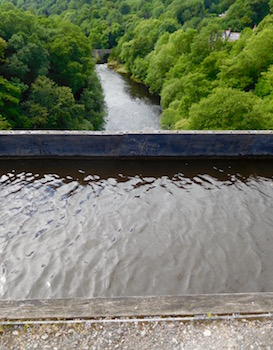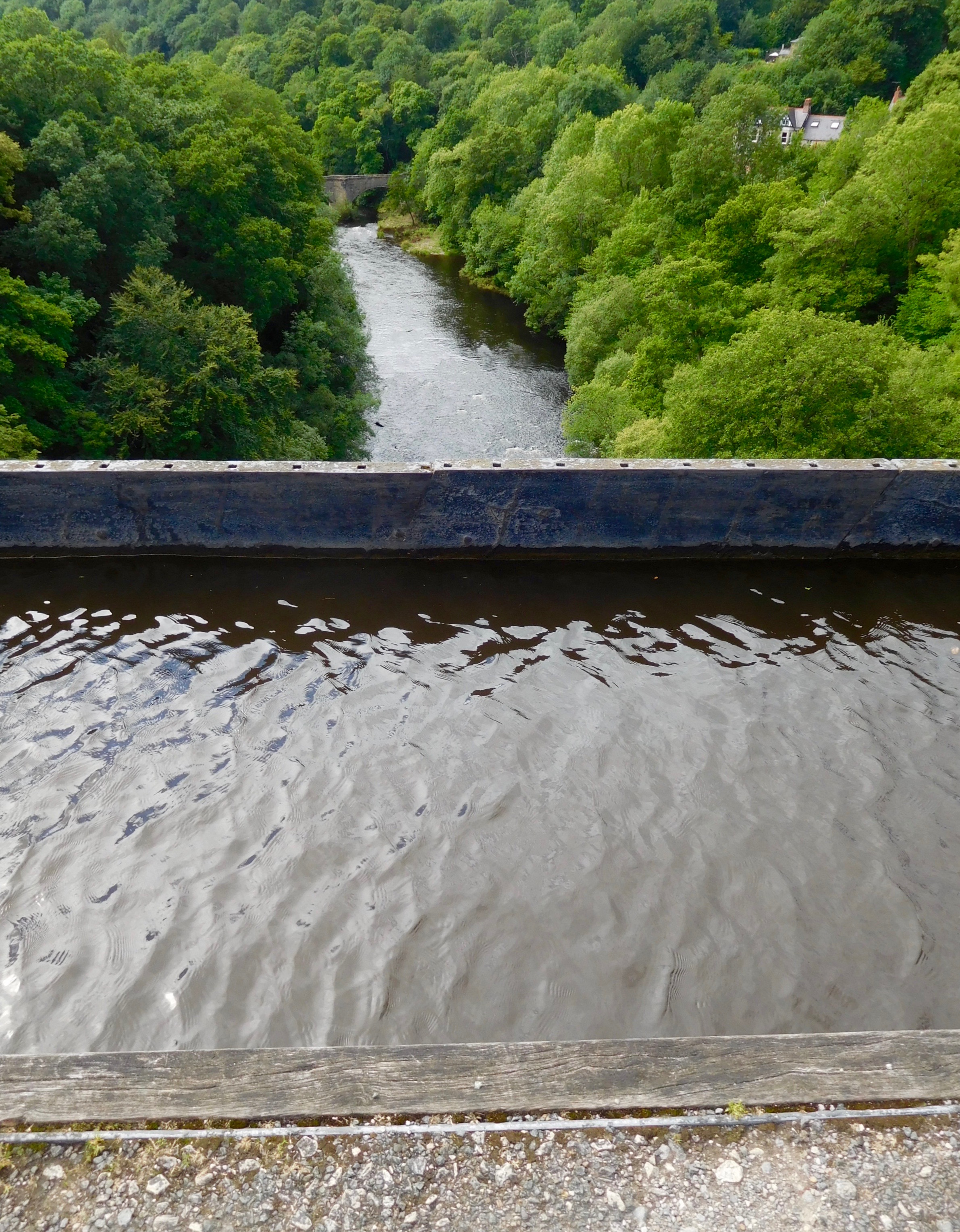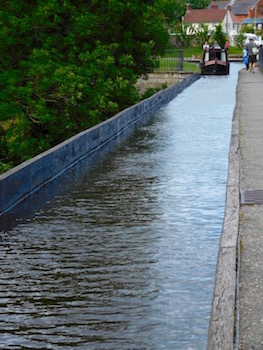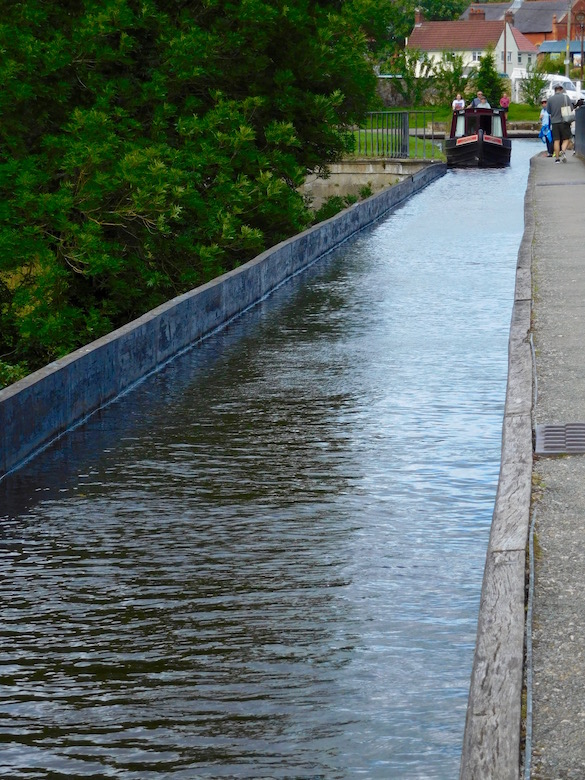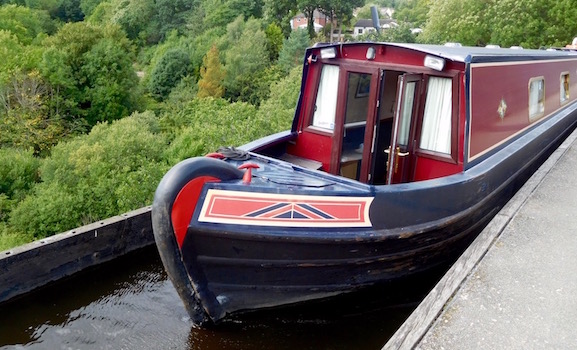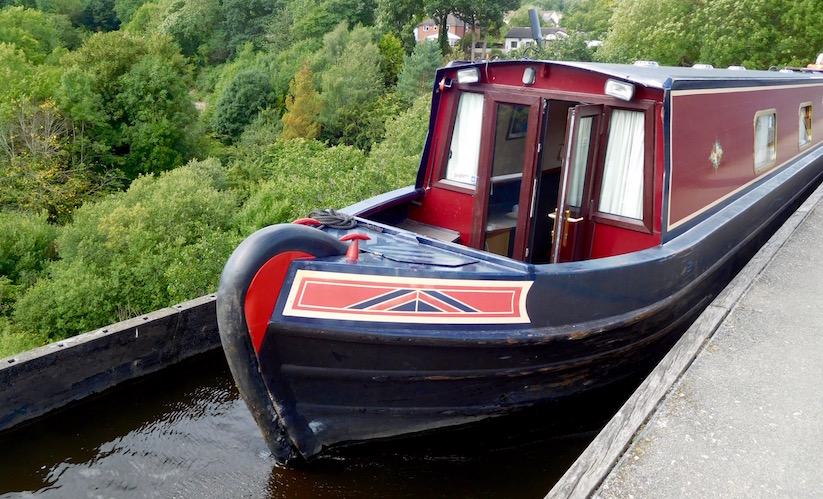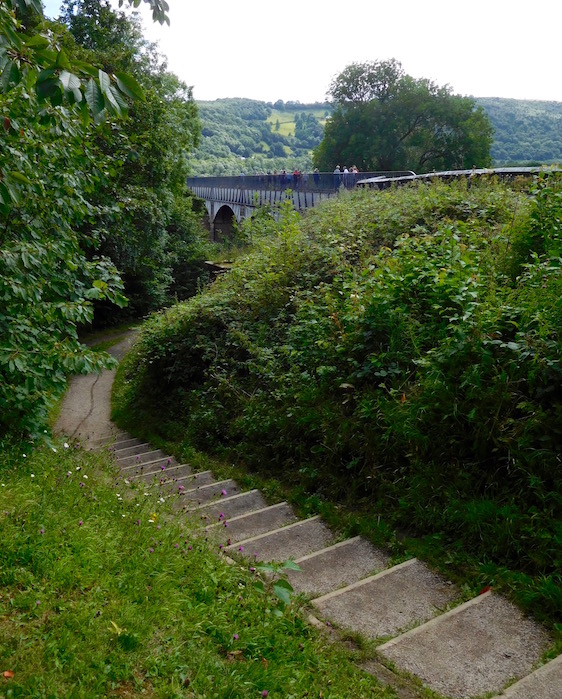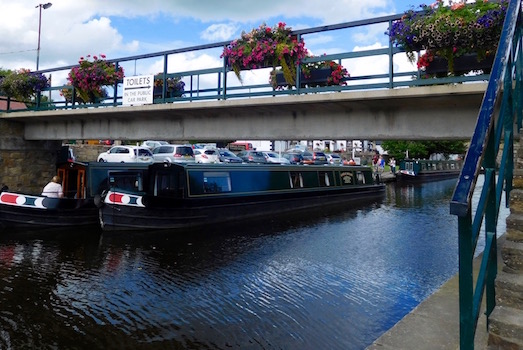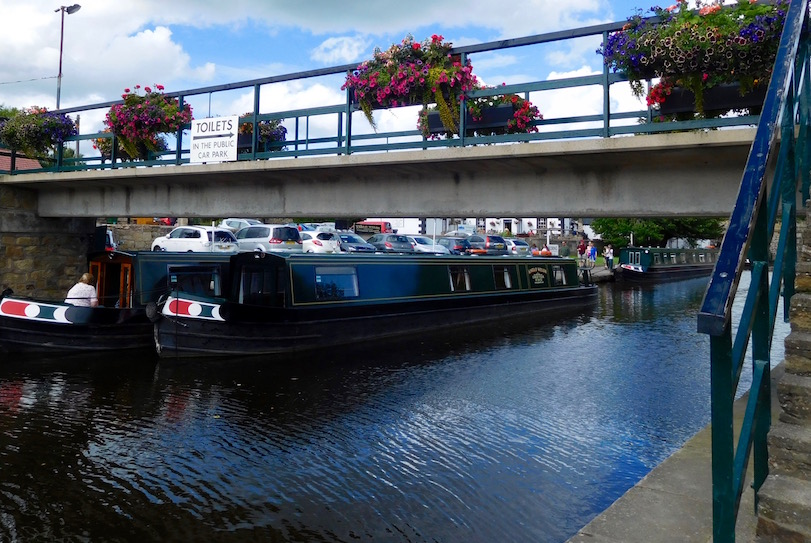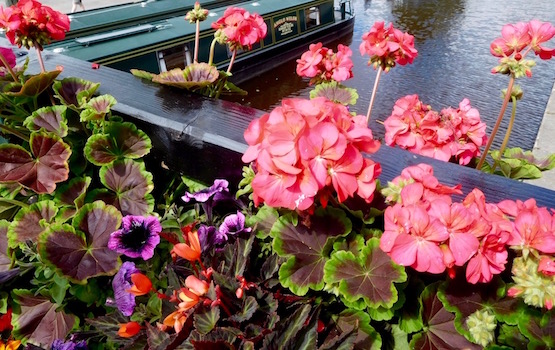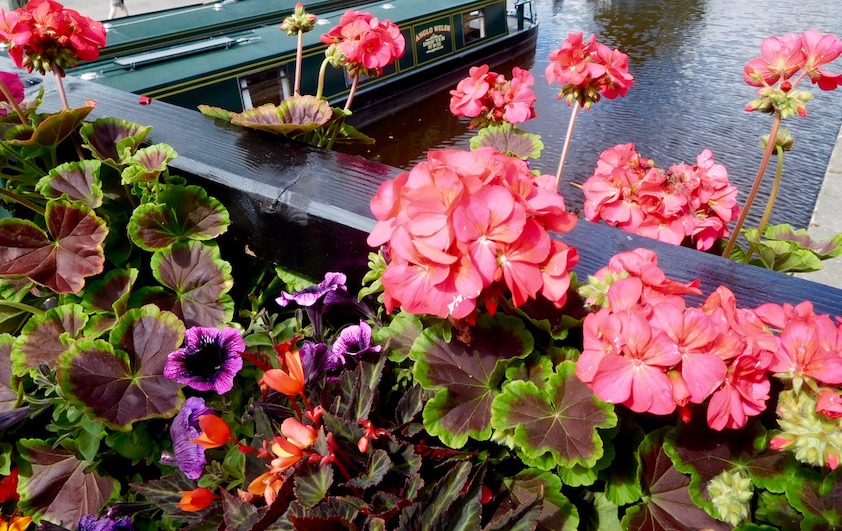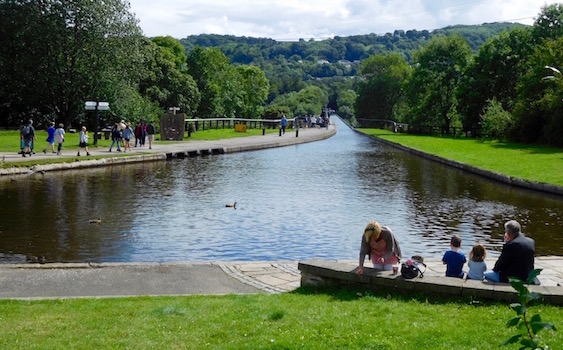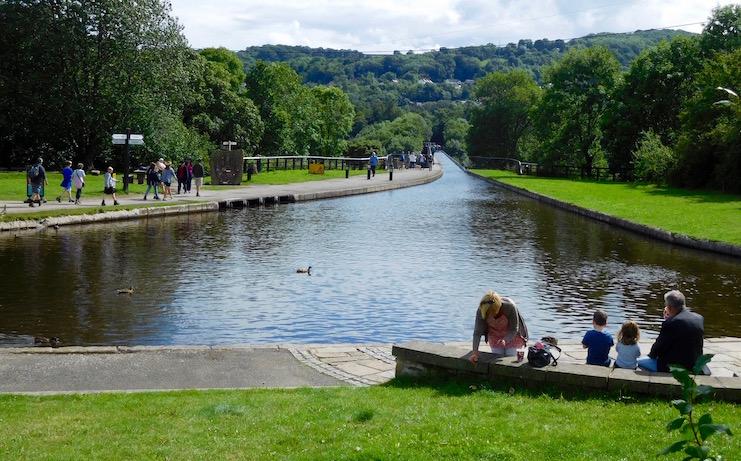Day 69
Oswestry to Frontcysyllte: 9 miles
Best Part of the Day: Clinging to the railing of the Pontcysyllte canal
Reason: It's like watching boats float through the air several hundred feet up

Passing the Battle of Crogan
So luckily yesterday's rain had mostly moved off today, except for a very localized spot of clouds that seemed to follow me for the first 25 minutes of my walk and then disappeared into nothing, and a later, shorter downpour that found my lost on top of a hill filled with cows, trying to unsuccessfully find shelter in some scrub bushes. Like I said, rain had totally moved off.
Anyway, I made my way slowly across the soggy hills toward Chirk Castle - which I mentioned I'd actually visited yesterday after being rained out by thunderstorms. Today I actually got to approach it by heading down into a valley and then up from below.

Even from a mile or two away the hilltop castle was pretty impressive. Also impressive were the plaques recording the Battle of Crogan, a twelfth century battle which one plaque noted was 'part of the Berwyn Mountains campaign as Wales fought for its freedom from English domination.' This war happened when King Henry II worried about a Welsh prince-Marcher lords alliance, and so raised a huge army to march on Wales. Vastly outnumbered, Owain Gwynedd's smaller Welsh force relied on guerilla tactics and ambushes, and successfully thwarted the English (Henry II was nearly killed in the process).
There's a tree called 'The Great Oak at the Gates of the Dead' that stands at the point on Offa's Dyke where the first ambush took place, and I wandered over to take a look before heading up to see Chirk Castle a second time. While it's being a pretty old tree means it looks sort of the worse for wear, it is pretty amazing, when you think about it, that it's the location of a memorable battle 900 years ago. 900 years is a long time, and although I've seen thousand years old burial mounds, for some reason battles like this, where we actually know a lot about the combatants, can seem more interesting.

The Gates of Chirk
Anyway, I went up to Chirk Castle again, and around Chirk Castle again. I did not, however, pass the fabulous gates of Chirk Castle and thus I don't have a photo of them. This is because the gates of Chirk Castle don't stand at the main entrance to Chirk Castle. Funny story.
Although I don't have a photo of them, let me tell you about it anyway. In the earlier 18th century the Myddelton then in charge of Chirk commissioned a pair of blacksmith brothers from Wrexham to make wrought iron gates for him. Unusually, he agreed to pay them by the day, in this case a whopping 10 pence. Apparently it then unexpectedly (and rather conveniently if you think about it) took them 8 years to finish the gates.

But they really were worth it - massive wrought iron baroque gates with eagles, wolves, scrolls, bloody hands, you know, the usual. That said, the owners thought they were actually a bit too much for the main entrance, so they ended up put them up as the gates to a side entrance. Over the years, as the gates became more and more dilapidated, they were moved further out of sight of the castle. But after extensive 20th century restoration - the gates are back to looking beautiful again - which again makes it strange that they are set in a strangely inaccessible corner of the grounds.
And finally, the UNESCO-approved part of the day
After walking past the castle, the hiking was mostly small roads and fields and largely downhill - to where Offa's Dyke and I parted ways. Not the trail - but the dyke itself. While it runs a significant portion of the border of Wales, it ends here, and from Frontcysyllte the path itself simply follows a scenic route north.
But just as Offa's Dyke departed, I found myself on a canal. A canal that was in use. And a canal that has an aqueduct that has UNESCO status. Why? Because it's awesome.
More specifically, this early 19th century aqueduct is the oldest and longest navigable aqueduct in Great Britain, and the highest in the world. It was originally part of a never-fully realized plan to build a canal from Shrewsbury to Liverpool, via coal-rich North Wales. Soon after building the aqueduct, however, construction of the vast remainder of the waterway fell victim to someone not paying their bills. The canal was connected to other canal networks and transferred to different companies over the years, but ultimately closed for traffic in 1944. Shortly thereafter it breached its banks, washing out a section of nearby train track and causing a serious accident when a train ran into the breach.

It was fully restored in the latter 20th century, however, and nominated for and received UNESCO status in the 21st. And in 2017, P and I walked across it with what must have been 750 Chinese tourists. The reason I mention this is simply because there isn't much of a walkway - it's barely space for two people, a railing with a sheer drop on one side and a canal on the other - and that many people made the whole thing a challenge since no one wanted to pass on the non-railing side, and pushing against the railing made you feel like you were really pushing your luck.
Also, it wasn't really windy, but if you focused your attention - you could feel the whole aqueduct swaying which was decidedly unnerving. Since only one of us can afford to be nervous about heights at any given time, I spent the next several minutes of watching canal boats float across several hundred feet up assuring P that in my vast experience with UNESCO (which I led him to believe was more than reviewing like 2 resolutions and participating in a fake UNESCO debate for a 'Multilateral Diplomacy' course I had to take six years ago), they wouldn't put anything on their list that wasn't structurally sound and I'm sure they wouldn't lead tourists to believe it was safe if it wasn't.

Like I said, besides the fact that they do everything by consensus, I actually don't know that much about UNESCO, but it sounds reasonable doesn't it?
Anyway, by the end of the tightrope walk we were both hugging the railing as much as we possibly could, but we both also agreed that this place was super-cool. Seeing boats fly by at that height isn't something you see every day. And another thing you don't see every day is right nearby in Llangollen and I went to see it later in the day - but I was so excited about that one that I thought it deserved it's entirely own post. You'll find it here when I put it up.


